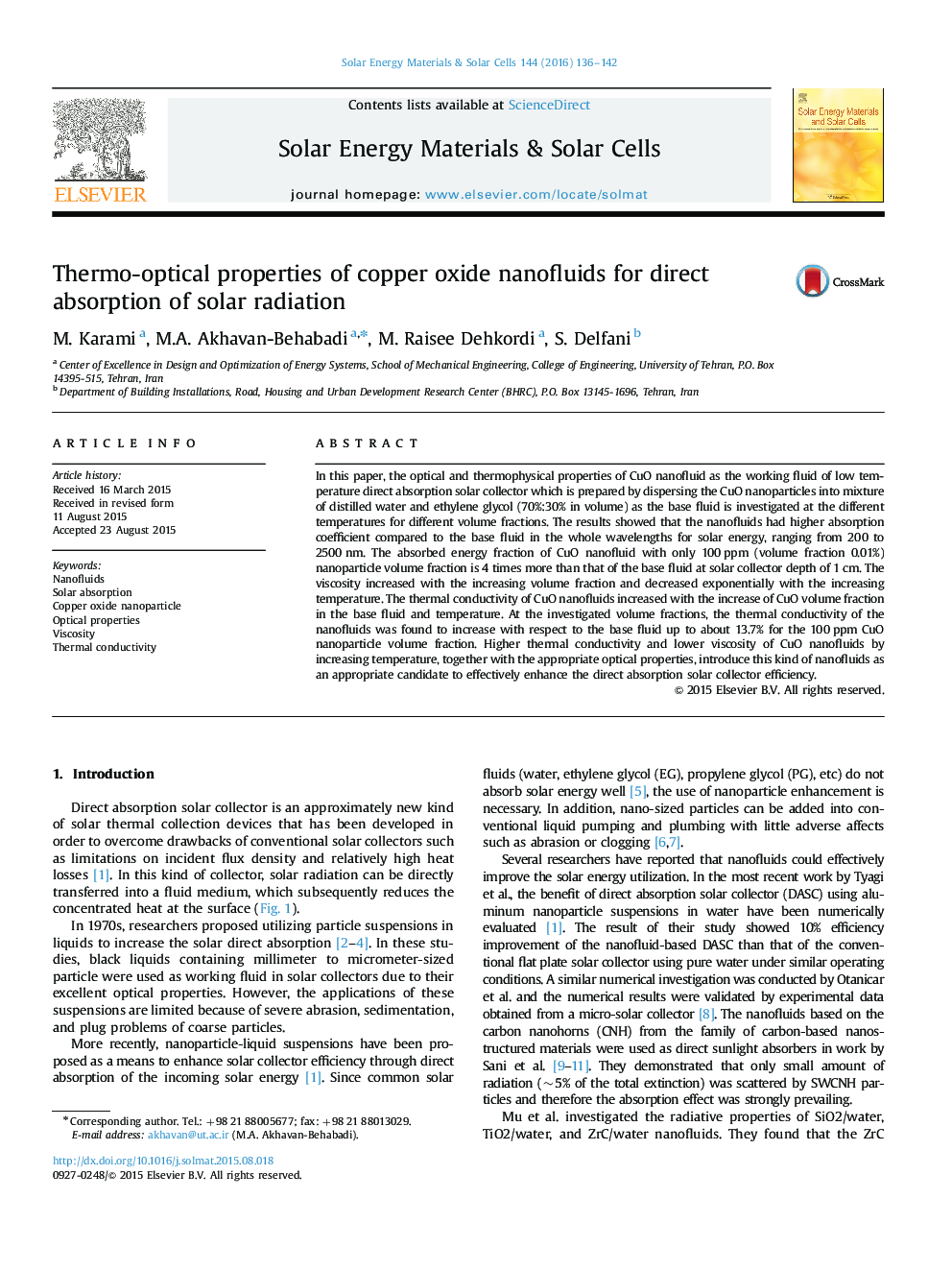| Article ID | Journal | Published Year | Pages | File Type |
|---|---|---|---|---|
| 6534883 | Solar Energy Materials and Solar Cells | 2016 | 7 Pages |
Abstract
In this paper, the optical and thermophysical properties of CuO nanofluid as the working fluid of low temperature direct absorption solar collector which is prepared by dispersing the CuO nanoparticles into mixture of distilled water and ethylene glycol (70%:30% in volume) as the base fluid is investigated at the different temperatures for different volume fractions. The results showed that the nanofluids had higher absorption coefficient compared to the base fluid in the whole wavelengths for solar energy, ranging from 200 to 2500Â nm. The absorbed energy fraction of CuO nanofluid with only 100Â ppm (volume fraction 0.01%) nanoparticle volume fraction is 4 times more than that of the base fluid at solar collector depth of 1Â cm. The viscosity increased with the increasing volume fraction and decreased exponentially with the increasing temperature. The thermal conductivity of CuO nanofluids increased with the increase of CuO volume fraction in the base fluid and temperature. At the investigated volume fractions, the thermal conductivity of the nanofluids was found to increase with respect to the base fluid up to about 13.7% for the 100Â ppm CuO nanoparticle volume fraction. Higher thermal conductivity and lower viscosity of CuO nanofluids by increasing temperature, together with the appropriate optical properties, introduce this kind of nanofluids as an appropriate candidate to effectively enhance the direct absorption solar collector efficiency.
Keywords
Related Topics
Physical Sciences and Engineering
Chemical Engineering
Catalysis
Authors
M. Karami, M.A. Akhavan-Behabadi, M. Raisee Dehkordi, S. Delfani,
